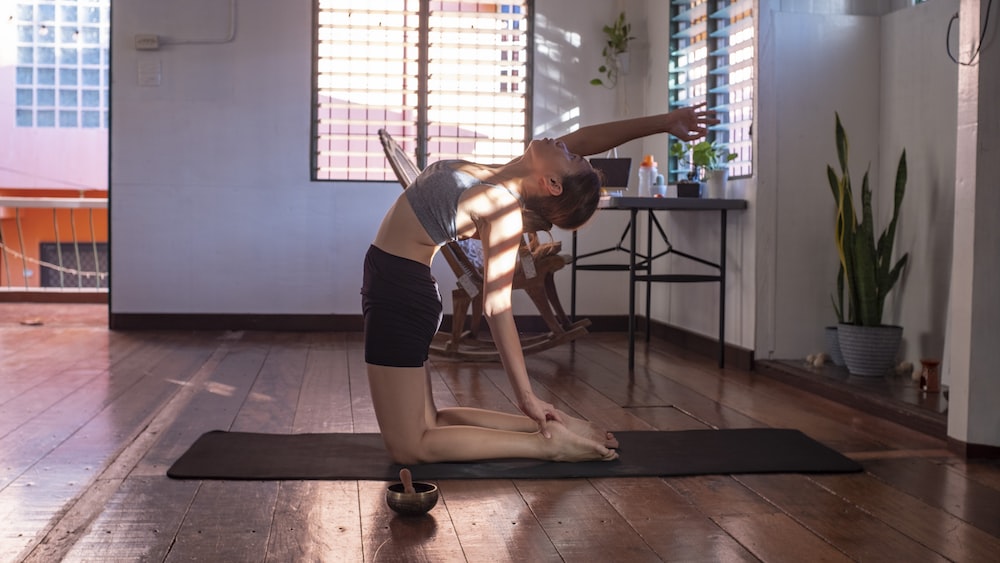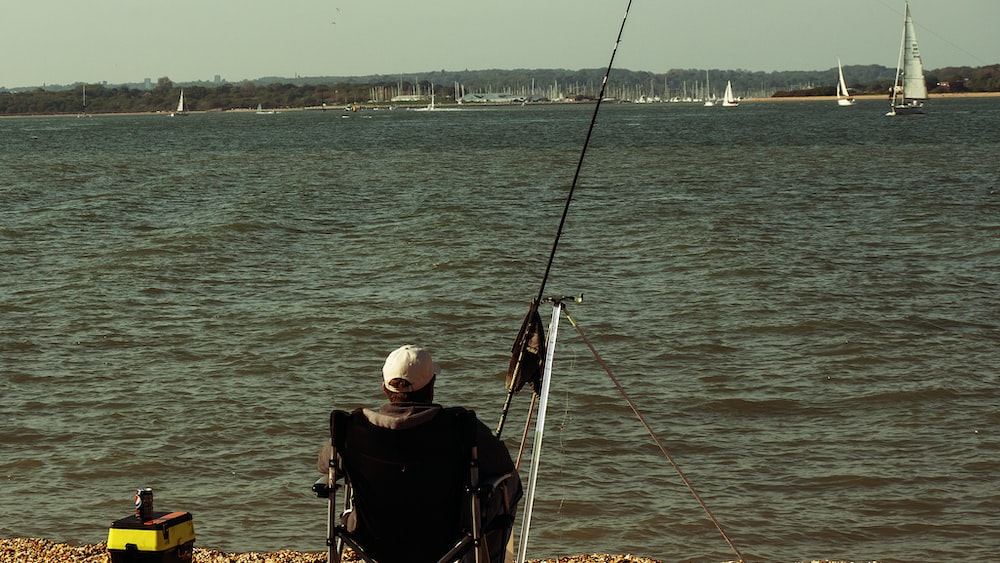51 Fun Mindfulness Activities For Kindergarten Kids
Welcome to the wonderful world of mindfulness! In today’s fast-paced society, it’s more important than ever to teach our children the art of being present and aware. And what better way to do that than through fun, engaging activities designed specifically for kindergarten kids? In this article, we’ll be exploring a whopping 51 mindfulness activities that you can easily incorporate into your classroom or home life. So, let’s embark on this exciting journey to foster emotional, mental, and social well-being in our little ones!
In the first section, we’ll dive into 25 mindfulness activities that are perfect for kindergarten kids. These activities are designed to be simple, engaging, and easily adaptable to various situations. Next, we’ll provide you with 26 additional mindfulness activities to further expand your mindfulness toolkit. Finally, we’ll discuss the benefits of mindfulness activities for kindergarten kids, and provide some tips for implementing these activities in the classroom.
So, are you ready to dive into the world of mindfulness and help your kindergarten kids reap the benefits of these amazing activities? Great! Let’s get started!
25 Mindfulness Activities for Kindergarten Kids
In this section, we’ll outline 25 mindfulness activities that are perfect for kindergarten kids. These activities are designed to be fun, engaging, and easily adaptable to various situations. Let’s jump right in!
- Deep belly breathing: Teach kids to take slow, deep breaths, focusing on the rise and fall of their belly.
- Mindful listening: Have kids close their eyes and listen to various sounds in the environment.
- Yoga for kids: Incorporate simple yoga poses and stretches into your daily routine.
- Gratitude circle: Encourage kids to share something they’re grateful for each day.
- Coloring meditation: Provide coloring pages and encourage kids to focus on the process of coloring.
- Mindful eating: Encourage kids to savor and appreciate the taste, texture, and smell of their food.
- Nature walk: Take kids for a walk outside and encourage them to use all their senses to explore the environment.
- Body scan: Teach kids to focus on different parts of their body, noticing any sensations or tension.
- Calm down jar: Fill a jar with water and glitter, and have kids watch the glitter settle as a way to calm down.
- Scented playdough: Create playdough with different scents and have kids describe the smell and texture.
- Feeling charades: Encourage kids to act out different emotions and guess what they’re feeling.
- Mindful storytelling: Read a story and pause frequently to discuss the characters’ emotions and actions.
- Heartbeat exercise: Teach kids to feel their heartbeat and count the beats for a set period of time.
- Balancing poses: Encourage kids to practice balancing on one foot, focusing on their breath and body.
- Musical mindfulness: Play calming music and have kids listen carefully and describe how it makes them feel.
- Mirror emotions: Have kids pair up and take turns mimicking each other’s facial expressions.
- Mindful movement: Encourage kids to move around the room in slow motion, paying attention to their movements.
- Guided relaxation: Create a relaxing scene for kids to imagine and guide them through the experience.
- Gratitude jar: Create a jar for kids to place notes sharing things they’re grateful for.
- Hoberman sphere breathing: Use a Hoberman sphere to guide kids through deep breathing exercises.
- Five-finger breathing: Teach kids to trace their fingers while focusing on their breath.
- Positive affirmations: Encourage kids to repeat positive statements about themselves.
- Loving-kindness meditation: Guide kids through sending positive thoughts to themselves and others.
- Emotion wheel: Use an emotion wheel to help kids identify and discuss their feelings.
- Candle gazing: Light a candle and have kids focus their gaze on the flame, practicing mindfulness.
26 Additional Mindfulness Activities for Kindergarten Kids
Now that you’ve got a solid foundation of mindfulness activities, let’s expand your toolkit with 26 additional activities that are perfect for kindergarten kids. These activities are designed to be fun, engaging, and easily adaptable to various situations. Let’s jump right in!

- Mindful stretching: Encourage kids to stretch their bodies while focusing on their breath.
- Emotion stones: Create stones with different emotions painted on them and have kids share their feelings.
- Weather report: Have kids describe their current emotional “weather” (e.g., sunny, stormy, cloudy).
- Mindful freeze dance: Play music and have kids freeze when it stops, focusing on their breath and body.
- Lily pad jumping: Place paper “lily pads” on the floor and have kids jump from one to another, focusing on their movements.
- Silent ball: Play a game of catch with a soft ball, encouraging kids to stay silent and focused.
- Animal poses: Teach kids various animal-themed yoga poses (e.g., cat, cow, downward dog).
- Bubble breathing: Have kids pretend to blow bubbles while taking slow, deep breaths.
- Mindful art: Encourage kids to create artwork while focusing on the process and their emotions.
- Sensory bottles: Create bottles with various materials (e.g., water, sand, beads) for kids to explore and describe.
- Feelings thermometer: Use a feelings thermometer to help kids identify the intensity of their emotions.
- Mindful walking: Encourage kids to walk slowly and mindfully, focusing on their steps and breath.
- Progressive muscle relaxation: Teach kids to tense and relax their muscles, focusing on the sensations.
- Sound meditation: Play various sounds (e.g., bells, rain) and have kids listen carefully and describe their experience.
- Compliment circle: Create a circle and have kids take turns giving and receiving compliments.
- Emotion collage: Provide magazines and encourage kids to create collages representing different emotions.
- Calm corner: Create a designated space in the classroom for mindfulness and relaxation activities.
- Breathing buddies: Have kids lie down with a stuffed animal on their belly, focusing on their breath and the rise and fall of the toy.
- Mindful obstacle course: Create an obstacle course and encourage kids to move through it slowly and mindfully.
- Sensory bin exploration: Provide bins with various materials (e.g., rice, water beads) for kids to explore and describe.
- Kindness tree: Create a tree where kids can add leaves representing acts of kindness they’ve witnessed or done.
- Feelings check-in: Encourage kids to regularly check in with their emotions and share how they’re feeling.
- Mandala coloring: Provide mandala coloring pages for kids to color while practicing mindfulness.
- Guided imagery: Read a story or create a scene for kids to visualize and experience in their minds.
- Breathing with a pinwheel: Have kids blow on a pinwheel while focusing on their breath.
- Emotion role play: Encourage kids to act out scenarios that involve different emotions and problem-solving.
Benefits of Mindfulness Activities for Kindergarten Kids
In this section, we’ll discuss the numerous benefits that mindfulness activities can have on kindergarten kids. From improved focus and concentration to enhanced social skills, these activities can have a profound impact on a child’s overall well-being. So, let’s explore these benefits in more detail!
Improved Focus and Concentration
One of the most significant benefits of mindfulness activities is improved focus and concentration. In today’s fast-paced, technology-driven world, it’s easy for kids to become distracted and have difficulty focusing on a single task. Mindfulness activities encourage kids to pay attention to their breath, body, and surroundings, which can help improve their ability to focus in other areas of their lives. Research has shown that mindfulness can even improve memory and cognitive functioning in children.
Not only does mindfulness help improve focus and concentration, but it can also help kids become more engaged in their learning experiences. By teaching kids to slow down and pay attention to their surroundings, they’re better able to absorb new information and make connections between ideas. In fact, studies have shown that mindfulness can lead to better academic performance in children and adolescents.
Mindfulness activities can improve children’s ability to focus, concentrate, and absorb new information leading to better academic performance.
Emotional Regulation
Another significant benefit of mindfulness activities is improved emotional regulation. Emotional regulation is the ability to manage and express one’s emotions in a healthy and appropriate manner. For young children, this can be particularly challenging, as they’re still developing the skills necessary for understanding and processing their emotions.
By practicing mindfulness, kindergarten kids can become more aware of their emotions and learn to identify and express them in appropriate ways. This can lead to decreased emotional outbursts, tantrums, and other disruptive behaviors. Additionally, mindfulness can help kids develop a greater sense of empathy and compassion, both for themselves and others.
Enhanced Social Skills
One often-overlooked benefit of mindfulness activities is the enhancement of social skills in kindergarten kids. As children become more aware of their emotions and learn to regulate them, they’re better able to navigate social situations and form healthy relationships with their peers. Mindfulness encourages kids to be present and engaged in their interactions, which can lead to improved communication and collaboration skills.
Furthermore, many mindfulness activities involve group exercises, which can help kids learn to work together and support one another. By participating in these activities, children can develop a stronger sense of community and belonging, which is essential for their overall well-being and social development.
Stress Reduction
Mindfulness activities have a proven track record in reducing stress for people of all ages, including kindergarten kids. At such a young age, children can experience stress from various sources, such as separation anxiety, social pressures, and academic expectations. Engaging in mindfulness activities can help them develop healthy coping mechanisms and learn how to manage their stress levels in a more effective way.

Moreover, by teaching children to be present and aware of their feelings, they become better equipped to recognize when they’re becoming stressed and will be more likely to take a step back to calm down. This, in turn, promotes emotional resilience and overall well-being, setting the foundation for a happy and balanced life.
Tips for Implementing Mindfulness Activities in the Classroom
Implementing mindfulness activities in the classroom can be a game-changer for both students and teachers alike. The key is to approach the process with openness, patience, and a willingness to adapt. Let’s explore some valuable tips to help you get started.
Create a Calm Environment
One of the first steps in introducing mindfulness activities to kindergarten kids is to create a calm and inviting environment. This can be achieved by incorporating elements such as soft lighting, comfortable seating, and soothing background music or nature sounds. Additionally, consider designating a specific area of the classroom as a “mindfulness zone” where children can retreat to when they need a moment of peace and quiet.
When the physical environment is conducive to relaxation and self-reflection, children will be more inclined to participate in mindfulness activities and embrace the practice as a natural part of their daily routine.
Introduce Activities Gradually
It’s important to remember that mindfulness is a new concept for most kindergarten kids, so it’s essential to introduce activities gradually. Start with simple exercises, such as deep breathing or listening to calming sounds, and build from there. This will help the children become familiar with the idea of mindfulness and allow them to experience its benefits firsthand.
As the children become more comfortable with the practice, you can introduce more advanced techniques, such as guided imagery or body scans. This gradual progression will help ensure that the children remain engaged and motivated to continue practicing mindfulness.
Introduce mindfulness gradually to kindergarten kids, starting with simple exercises like deep breathing or calming sounds, and gradually build up to more advanced techniques.
Encourage Regular Practice
Consistency is key when it comes to reaping the full benefits of mindfulness. Therefore, it’s important to encourage regular practice in the classroom. Aim to incorporate mindfulness activities into the daily routine, such as starting the day with a short breathing exercise or having a mindfulness moment after recess.
In addition to structured activities, encourage children to practice mindfulness independently during free play or downtime. This will help them develop a strong foundation in mindfulness and learn to integrate the practice into their everyday lives.

Involve Parents and Caregivers
Lastly, involving parents and caregivers in the mindfulness journey can greatly enhance its effectiveness. By communicating the benefits of mindfulness and providing resources for home practice, you can help create a supportive environment that extends beyond the classroom.
Consider hosting a workshop or informational session to educate parents on the importance of mindfulness and share tips on how to incorporate these practices at home. By involving the entire support system, you’ll be setting the stage for the children’s long-term success in embracing mindfulness as a tool for personal growth and well-being.
FAQs
1. How long should mindfulness activities last for kindergarten kids?
How long mindfulness activities should last for kindergarten kids usually depends on their age and attention span. Generally, it’s recommended to start with short sessions of about 3-5 minutes and gradually increase the duration as children become more comfortable and engaged in the practice.
2. Can mindfulness activities be adapted for children with special needs?
Adapting mindfulness activities for children with special needs is definitely possible. In fact, mindfulness can be particularly beneficial for these children, as it helps them develop self-awareness, focus, and emotional regulation. When adapting activities, consider the individual needs and abilities of each child, and modify exercises accordingly. Be sure to involve therapists, special education professionals, and parents for guidance.
3. How can I measure the effectiveness of mindfulness activities in my classroom?
Measuring the effectiveness of mindfulness activities in your classroom can be done through various methods. One way is to observe changes in students’ behavior and emotional well-being, such as improvements in focus, emotional regulation, and social skills. Additionally, consider using questionnaires or surveys to gather feedback from both students and parents on the impact of these activities. Lastly, track your students’ progress over time to determine long-term effects.
4. Are there any specific resources or tools recommended for teaching mindfulness to kindergarten kids?
Specific resources and tools for teaching mindfulness to kindergarten kids include age-appropriate books, guided meditation recordings, and various online resources. Some popular choices are “Sitting Still Like a Frog” by Eline Snel, the “Calm” app, and websites like Mindful Schools or Inner Explorer. These tools can help you design engaging and age-appropriate mindfulness activities for your students.
Conclusion
In conclusion, mindfulness activities for kindergarten kids offer numerous benefits, including improved focus, emotional regulation, and social skills. By incorporating these activities into your classroom, you’re providing your students with valuable tools that will serve them well throughout their lives.
Remember to adapt exercises to suit the needs and abilities of your students, and involve parents, therapists, and other professionals when needed. Keep track of your students’ progress and make adjustments as necessary to ensure they continue to reap the benefits of mindfulness practice.
With the 51 fun mindfulness activities provided in this article, you’re well on your way to creating a nurturing and mindful environment for your kindergarten students. Happy teaching, and may your classroom be filled with calm and focused little learners!
I wish you the best! Fabian.
Share with your Friends:






